Bullpup - from the first samples to the present day (part of 3)
The Austrian army received the Stg.77 submachine gun, which is better known as the AUG, created by the specialists of the Steyr plant. The French army received a machine gun FAMAS F1, created by experts of the concern GIAT. At the same time, it is the appearance of the Austrian AUG submachine gun that is known to almost everyone today. For the decision to adopt small arms in the bullpup layout were radically changed tactical requirements for an infantry rifle. The reason was that at that time almost all European infantry turned into mechanized and had to get on the battlefield aboard special armored vehicles or helicopters that were not distinguished by the amphibious units. In such conditions, a new infantry infantryman had to combine compactness with ballistic efficiency. The layout of the bullpup perfectly met these requirements.
A new assault rifle was adopted by the Austrian army in 1977 year under the designation Stg.77 (assault rifle, model 1977 of the year). Her massive release was deployed in 1978 year. Since then, it was AUG that gained great popularity in the world, it is in service with not only the Austrian army, but also a dozen armies of other states. Also, this weapon was well purchased by law enforcement agencies and security companies around the globe, including some US units. At the moment, it is Steyr AUG that can be safely considered the most successful from a commercial point of view, an assault rifle, made in the bullpup layout.
In fact, AUG is a competent combination of various previously known ideas that were collected into one reliable and aesthetically attractive set. This is a truly rational and really very successful result of the implementation of ideas that gunsmiths have known before. The modular design of the Austrian weapon allows you to sort through weapons in a very large range. When replacing the barrel and bolt group (in some cases, the receiver of the store) it can be: automatic rifle, carbine, submachine gun, light machine gun or sniper rifle.
The basis of the AUG assault rifle is a receiver made of aluminum alloy with the presence of inserts of high-strength steel. One such insert was used for attaching interchangeable barrels and locking the rotating bolt of the weapon, which protected the receiver from stresses during firing. The remaining inserts were used as guides for the leading bars of the bolt carrier. Automatic rifle worked by the removal of gases with a short stroke piston, which was installed inside a small-sized gas block, fastened to the barrel of the weapon. The gas chamber relative to the barrel was shifted to the right.
For this bullpup, there were four main types of trunks. The standard rifle rifle had a length of 508 mm, a karabiner one - 407 mm, a compact one - 350 mm, a heavy barrel (for a light machine gun) - 621 mm. At the same time, it was possible to replace the barrel with any rifle in seconds. Each of them was supplied with a flame arrester, and a heavy machine-gun barrel was also equipped with light folding bipods. Given that the shooter had a spare trunk on hand, the procedure for replacing it took a few seconds. In order to remove the barrel, it was necessary to take a magazine out of a rifle and cock the percussion mechanism with a reloading handle. After that, it was necessary to take the barrel by the front handle, press the button on the gas block that held the barrel, then turn it and remove it from the rifle. To mount a new barrel, it was necessary to push the barrel into the receiver to the stop, and then turn it until it was locked.
The FAMAS French rifle in the F1 version was adopted by the French army a year later than the Austrian - in 1978. In 1980, it was first shown at a parade, with this assault rifle armed soldiers of the French airborne troops. As production increased, this rifle turned into the main individual small arms of the country's armed forces, and its total output amounted to about 400 thousand pieces, of which only a small amount was exported.
In all versions, the FAMAS rifle is made according to the bullpup layout. At the same time in this assault rifle used a rather rare scheme of automation with a free gate, having a moderator opening in the form of a lever. Such a scheme in a modified form was borrowed by Paul Telle from the single French AAT-52 machine gun of the 1952 model of the year, and it was originally proposed by the Hungarian Paul de Ciraly at the end of the 1930's.
The trigger trigger FAMAS was designed as a separate quick-detachable module. Inside the trigger guard was located a flag fuse-translator of fire, he was in front of the trigger. The main firing modes are “fuse”, “automatic fire”, “single shots”. Additionally, on the case of the firing mechanism behind the magazine, there was a switch that turned on or off the firing mechanism in bursts with the cartridge cut-off according to the 3.
The stem box of the French assault rifle was quite compact, and most of the details of the body of the weapon, including the forearm, the USM case, the butt, the carrying handle, were made of plastic. Sights in the form of a diopter pillar and front sight were mounted on the trunk on special racks that were hidden in the carrying handle. Also on the handle for carrying weapons could be set guides for optical sights, and on the fore-end stock were folding light aluminum bipods. Unlike the AUG, intended for the Austrian army, the French FAMAS assault rifle was staffed with a bayonet knife.
A little later, the British army also acquired its standard weapons in the bullpup layout, which adopted the SA-80 infantry complex chambered for a 5,56-mm NATO cartridge. This complex consisted of an L85 assault rifle and an L86 light machine gun. Later, an interesting sample appeared in Germany. One of the industrial leaders of an old woman in Europe decided to release a very futuristic weapon. The HK G11 from Heckler & Koch was developed for a very long time, but, despite the release of a limited edition, it was not adopted for service. At the same time, the Germans tried to make a real revolution in the production of small arms, developing their assault rifle for a caseless cartridge.
In the last decades of the last century, various 5,56-mm automata built in the bull-pap layout were developed in many countries around the world, including Belgium, China, Israel, Singapore and Croatia. At the same time, the Chinese automatic system Type 95 (automatic and light machine gun) for the new Chinese intermediate cartridge caliber 5,8х42 mm became the most massive, due to the natural size of the army of the customer, along with the already mentioned Steyr AUG, Israeli became the most commercially successful IMI / IWI Tavor TAR-21 system. In our country, a rather original “two-medium” (amphibious) ADS machine gun, presented in the bullpup layout, was also created and then put into service with units of special forces of the Navy.
The Israeli Tavor TAR-21 assault rifle is in service with more than 15 nations of the world today. She was commissioned by the Israeli army in 2001 year. A curious feature of this small arms is the unification with the standard magazines for the M16 rifle on 20 / 30 cartridges. Thanks to this, Israeli gunsmiths managed to unify equipment for various types of small arms, which are available today in the Israel Defense Forces.
Like many other promising models of small arms built according to the bullpup scheme, the Israeli Tavor TAR-21 combined several classes at once based on the basic design: the usual assault rifle (mm 460 barrel), the shortened Commando TAR C21 (mm 360 barrel) ), subcompact machine TAR M21 "Micro-Tavor" (330 barrel mm, this is almost a submachine gun) and a sniper rifle with a STAR-21 "Sniper Tavor", this version also had a bipod. A variant of the Micro-Tavor machine could be modified to use the popular pistol cartridge 9х19mm by replacing the bolt group, barrel and mounting a special adapter in the receiver for the stores.
It is curious that the submachine guns, which eventually became a gradually dying type of army weapon, at the end of the 20th and the beginning of the 21st century experienced a certain renaissance and this was only due to the layout of the bullpup. The Belgian submachine gun FN P90 of caliber 5,7x28 mm first appeared, which attracted attention not only with its unusual appearance, but also with its location over the barrel of the weapon. And already in our century, in the footsteps of the Belgian model in the People's Republic of China, a submachine gun of Type 05, created for a special small-caliber cartridge 5,8x22 mm, was created. It was also built according to the layout of the bullpup and was distinguished by the presence of a high-capacity magazine for 50 cartridges.
It is important to note the fact that only those designs that were originally designed in the bullpup layout could achieve certain success. Numerous attempts to save money and time due to the conversion of traditional-style small arms into a bullpup layout did not end well. The Ukrainian Vepr, the Russian OTs-14 Thunderstorm, the South African Vektor CR-21, etc. can be cited as such unsuccessful examples.
This is easily explained by the presence of congenital defects in the bullpup layout, chief among which is the location of the chamber in the vicinity of the shooter’s face and the substantial removal of the fire control handle and trigger from the trigger directly. It was possible to bypass these shortcomings only through special engineering design solutions, which could only be realized in the traditional scheme through substantial and expensive weapon modifications, which deprived the very idea of conversion of any meaning.
At the same time, the problem of finding the chamber and the window for ejection of shells near the face of the shooter was particularly acute. On most of the most common assault rifles on the planet for a bullpup layout, this problem has been solved by having windows for ejecting cartridge cases on both sides of the weapon. The shooter has the opportunity to redirect the ejection of the sleeves, by rearranging or replacing some of the details of the bolt group. So in particular the problem was solved on rifles Steyr AUG, FAMAS and Tavor TAR-21. The Chinese, who generally look at life more simply, left their 95 Type rifle window to eject liners only on one right side, making slight changes to the design over time, so that the liners do not fly out strictly sideways, but forward and to the right, right in front the nose of a left-handed soldier, but not touching him.
The most radical approach to solving the designated problem was at one time in Belgium and Russia, where the FN F2000 and А91М production automata (and its further development of ADS), respectively, were created. In these models, spent cartridges are thrown from the weapon forward, without representing any threat to the shooter in any position of the weapon. The Belgians have provided for the passage of spent cartridges in the channel located to the right of the barrel and going almost to the very muzzle. And on the Russian automatic machines А91М and АДС the sleeves are thrown through a forward-facing window located in the cover of the receiver on the right side above the pistol grip.
In this case, over time, the layout of bullpup is increasingly used in the development of sniper systems, especially large-caliber ones. In some ways this repetition stories anti-tank guns such a layout that appeared before the Second World War. Today we can easily name a few production models caliber sniper rifles, which are created in the build Bullpup in the past few years: the Russian KAFP (12,7h108 mm), American Desert Tech HTI and Barrett M95 (12,7h99 mm), the Polish WKW Wilk (12.7x99 mm), Chinese LR2 and M06 (12.7x108 mm), Hungarian Lynx GM-6 (12,7x99 mm) and many others.
Nowadays, we can rightly say that the bullpup layout is already quite mature. She was able to firmly take her place on the world market of small arms and feels quite well, as evidenced by the development of more and more new types of small arms made according to this scheme, with wide variations: from compact submachine guns to large-caliber sniper rifles.
Information sources:
https://www.all4shooters.com/ru/glavnaya/tekhnika/2015-statyi/Bullpap-zrelyy-vozrast/?p=2
http://world.guns.ru/assault/fr/famas-r.html
http://army-news.ru/2011/12/shturmovaya-vintovka-tavor-tar-21/
http://ohrana.ru/weapon/automatic/4600
Open source materials
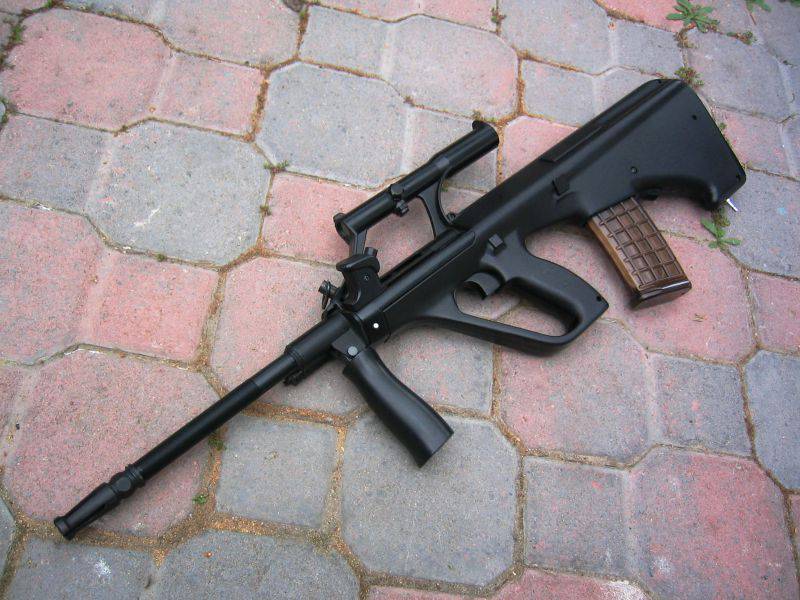
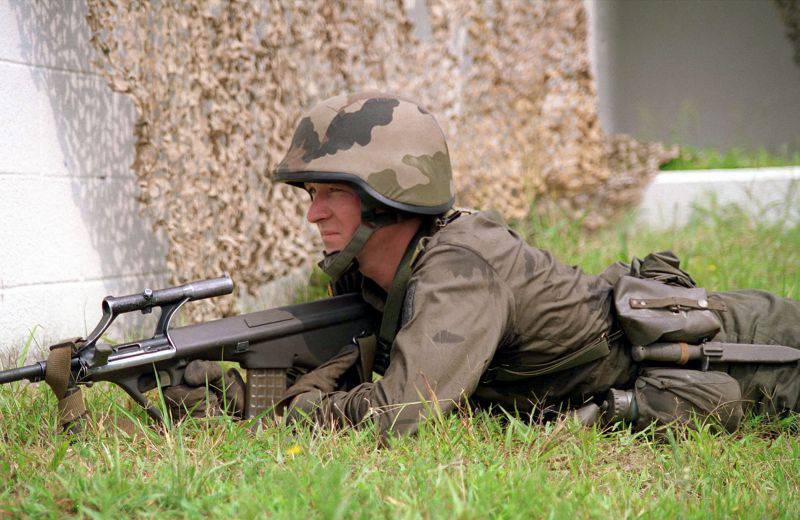
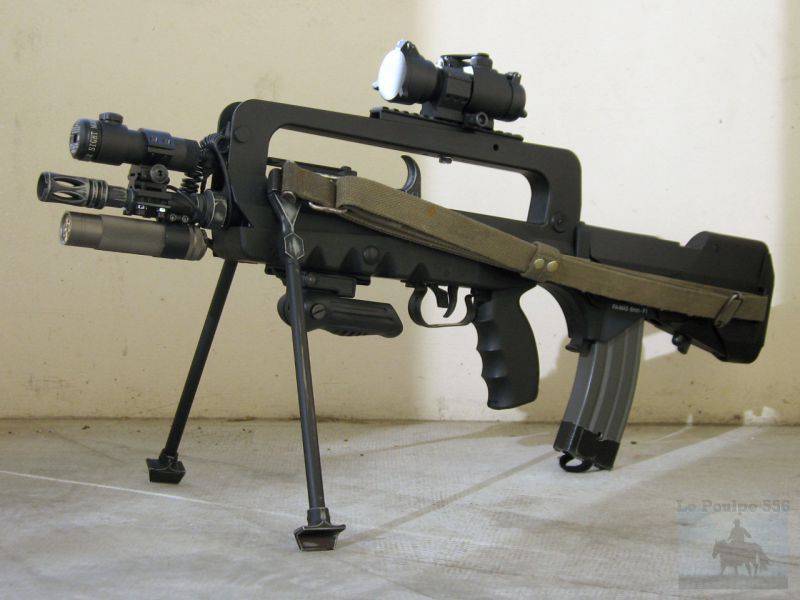
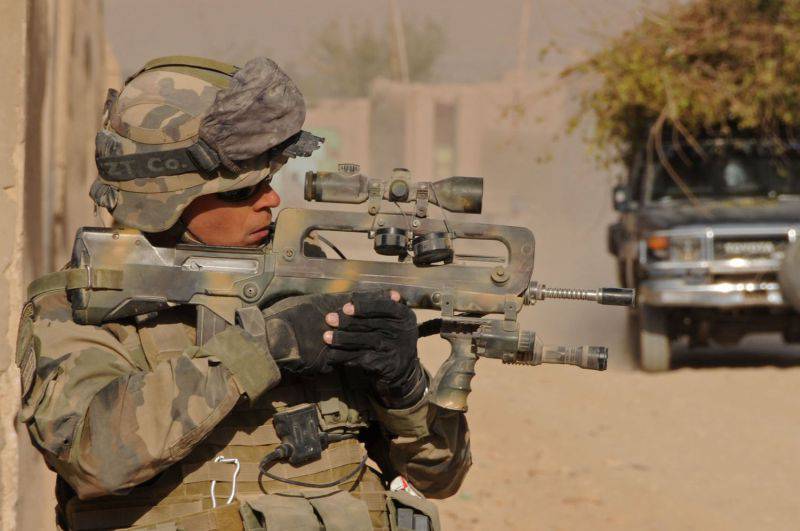
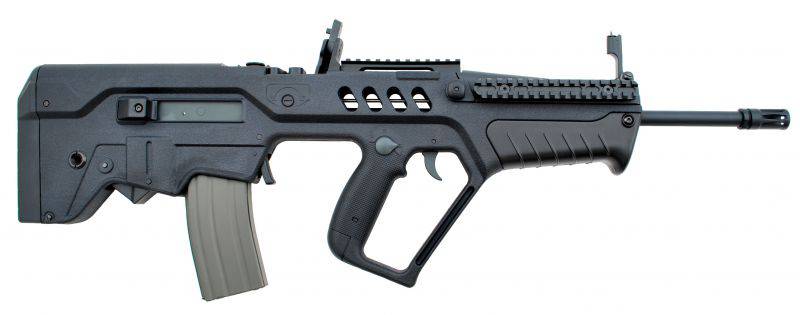
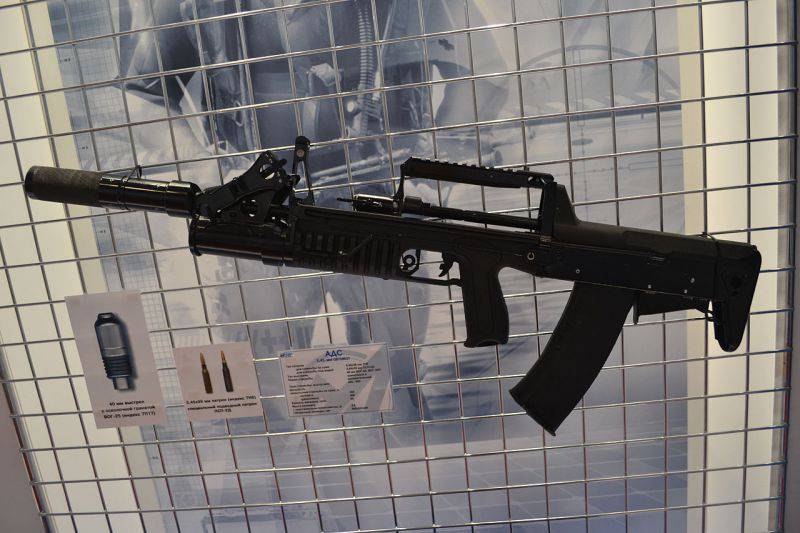
Information